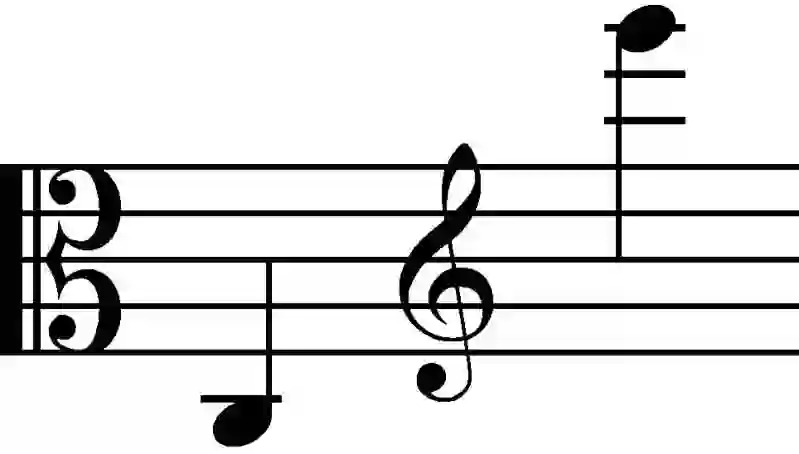Notation and sound generation of the viola - Philipp Dangas
Notation and sound generation of the viola
The viola has 4 strings. The lower tuning of the strings (scordatura) is also possible with the viola (viola), but is rarely used here. What was said about the violin applies accordingly to the sound generation of the viola.
Unlike the violin, its slightly larger resonator does not allow it to be played in the high registers without any problems (except for virtuoso playing). On the 3 low strings (4, 3 and 2) one usually does not go beyond the 5th position, while on the 1st string the 8th position and in exceptional cases even the 10th or 11th position can certainly be reached is. The use of a specific string follows the rule: "sul G" (or A, D, C) i.e. "on the G string".
The viola is notated in the alto clef (in the higher positions, i.e. in the two- and three-line octave, to avoid many auxiliary lines, also the treble clef). Since there is no specific limit for the transition from the alto to the treble clef, the viola players must be practically familiar with the fingering of the two clefs in the entire scale range of their instrument.
This procedure is usually used between connected phrases in order to avoid a constant change of keys. The notation is not transposed. The alto clef is the general obstacle to violinists being able to take on the viola without further ado, since they are mostly unfamiliar with it.
[Music composer: Dmitri Shostakovich]
Download Size: 206 Kilobytes
Table summary of the pitch range of the viola
The following table shows the pitch range of the four strings of a viola shown. The string designation and string tuning is also mentioned.

The range of a viola in large scale
From c [minor octave] to e3 [3rd Octave]
Internal search function
| Name | Value | Delete |
|---|